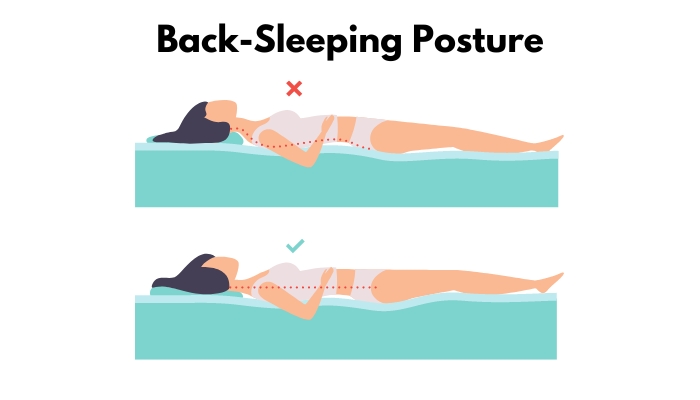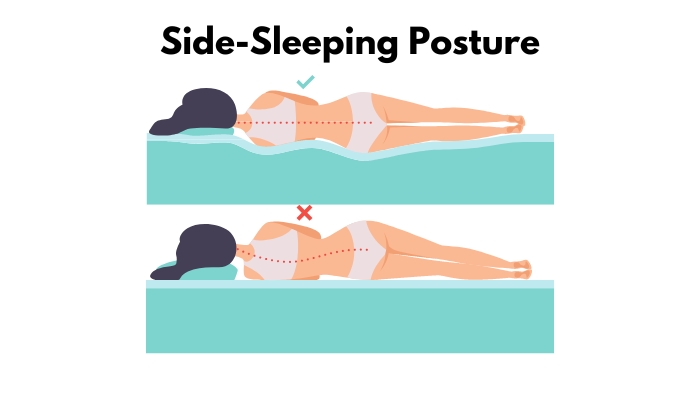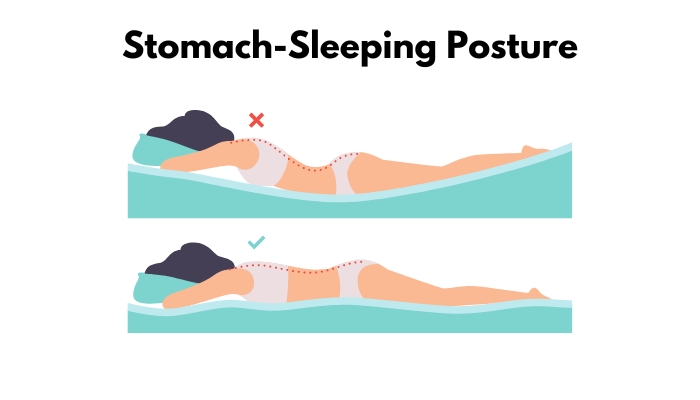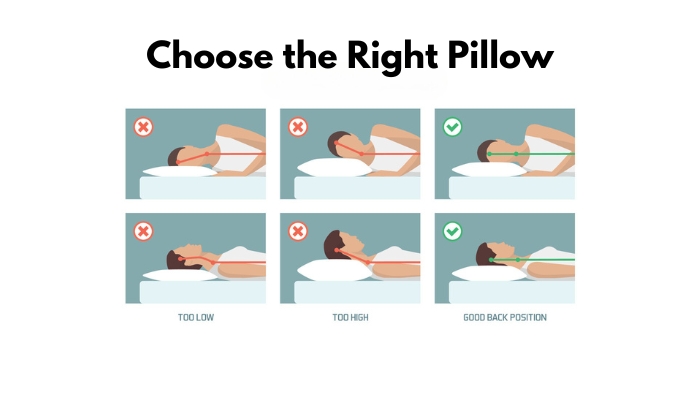Having good posture is something lots of people struggle with; it's hard to correct! But did you know your sleeping position can affect your body stance in your waking hours? By sleeping in a position that negatively affects healthy spinal alignment, you could wake up with more back pain and stiffness!
And believe it or not, certain sleep positions are more beneficial than others! So, while it can be hard to adjust your sleeping position, the results will be more than worth it. Let's review which sleeping position is best for your posture and how to make adjustments!
Importance of Posture

You might've heard it before, but having good posture is crucial for your health. With good posture, you'll reduce your risk of injury when training, doing sports, or doing simple exercises! But if you have poorer posture, you can unnecessarily strain your muscles and ligaments, so even non-strenuous moves can hurt.
Poor posture can also cause stress, inflexible muscles, obesity, and too-tight muscles — yikes!
Posture and Sleep
So, how can your sleep affect your posture? For one, sleep is when the muscles and ligaments in your back relax and heal themselves. But if you don't have good sleep posture, you can strain your back and neck, which are crucial in maintaining spine health!
When you sleep, your position should keep your neck and spine in neutral alignment, which means straight and conducive to the natural curvature of the lower back. So, if you have poor posture, it's important to review your sleeping position and slowly try to correct it!
Back Sleepers

Are you a back sleeper? Congrats! This sleeping position is the healthiest for keeping better sleep posture. When you sleep on your back, you evenly distribute your weight across your body and keep your neck and spine neutral. Other benefits include experiencing reduced back pain (your muscles don't have to maintain the position) and more orthopedic comfort from the minimized tension on your pressure points!
But it's not all roses; back sleeping can worsen acid reflux, snoring, sleep apnea, or chronic respiratory issues. So, if you have any of these conditions, sleeping on your back might not be ideal for you.
How to Sleep Better On Your Back
If you're not a back sleeper and want to try it out, there are ways to help you sleep better in this new position. First, upgrade to a pillow designed for back or combination sleeping so your neck and spine are in neutral alignment. The pillow should cradle your neck while you like on your back but not elevate it to the point where you can glance down and see your toes.
Next, try gently elevating your knees by adding a small, round pillow or folded towel underneath to alleviate any discomfort. And lastly, make sure to have a lot of patience; it'll take a while to get used to it!
Side Sleepers

The next best sleeping position for better posture is side sleeping! Not only will it help improve your posture, but sleeping on your side can also improve your digestion, reduce pressure on your heart, and help remove toxic proteins from your brain!
But if you're still waking up stiff, even as a side sleeper, you may need to adjust your sleeping position a little. For instance, add a thin, firm pillow between your legs to help align your spine, hips, and pelvis. And make sure your head pillow is thick enough to raise your head so there's a straight line from your head and neck down your spine (your shoulders shouldn't be on the pillow!).
Pro Tip: Sleeping with your legs raised is good, but don’t raise them too high—it can bring your sleeping position out of alignment!
Stomach Sleepers

Unfortunately, sleeping on your stomach does not promote good spinal health or posture. Sleeping on your stomach puts pressure on your joints and the s-curve of your spine, forces you to twist your neck, and requires more of your body's energy to keep it elevated against elevated — that's energy that you're losing even as you sleep! Stomach sleeping can even cause higher heart rates — oh no!
But if you can't stomach any other position (heh, get it?), there are ways to improve your position. First, try putting a pillow under your stomach or pelvis and upgrade to a firmer mattress! And secondly, don't bend at the waist when you move at night; try to move your entire body simultaneously, instead!
Pillow Posture

Let's say you try to sleep in a better posture-relieving position, but you're still having trouble. It could be a problem with your pillow! Since your pillow goes under your head, it can raise your head and neck out of neutral alignment, which is a problem. So, for the best pillows for your sleeping position, consider these tips:
- Back Sleepers need a low-profile pillow, cervical pillow, or neck roll underneath (and don't forget to add one or two pillows underneath your knees to help with back pressure).
- Side Sleepers need a thicker pillow to support the head and neck and a firm pillow between the knees to keep the pelvis from distorting the natural line of the spine.
- Stomach sleepers should get the flattest pillows they can find or sleep directly on the mattress, so the head and neck aren't strained — don't forget to add another flat one under the abdomen or pelvis to maintain spinal alignment!
Good Sleep Form
Keeping good posture as you sleep is challenging, but the pain-free mornings are more than worth trying! But if you've tried for a while and still can't sleep better, it might be a problem with your mattress or pillow. Don't worry; you can find the upgrade you need at Van's Home Center!
Have any questions? Call our team or stop by — our sleep experts are happy to help you out!
